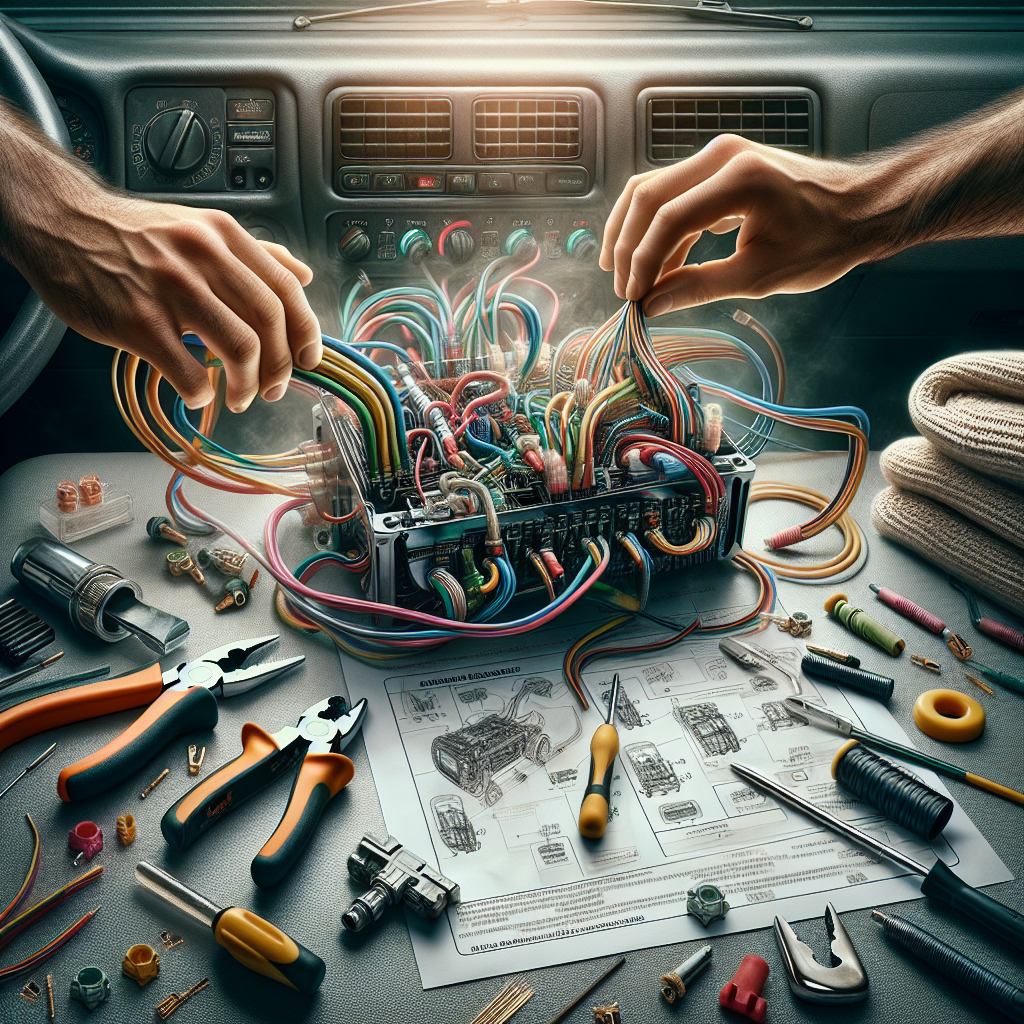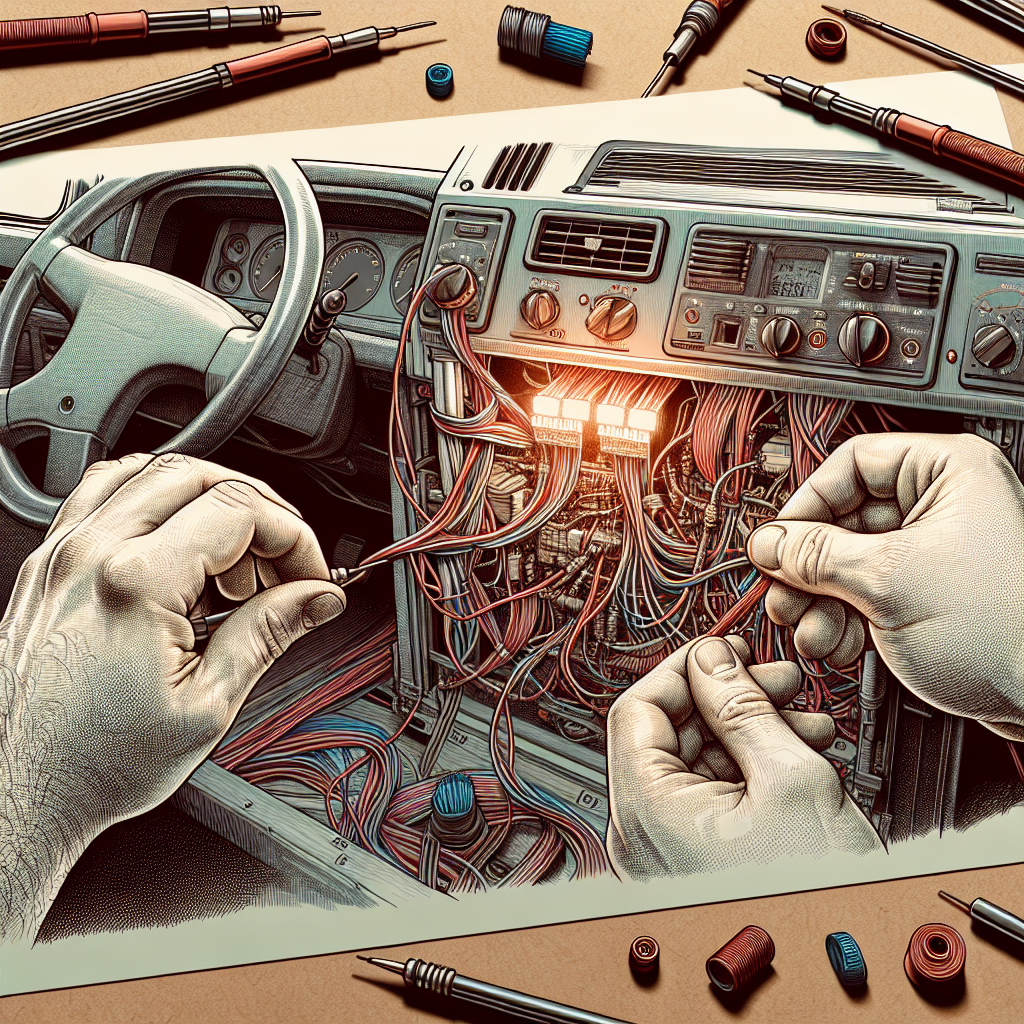So, you’ve finally decided to upgrade your heating system and get yourself a Chinese diesel heater with a power of 2Kw. That’s a smart choice! But now the question arises – how do you go about installing it? Don’t worry, we’ve got you covered. In this article, we’ll provide you with a step-by-step guide on how to install your new Chinese diesel heater like a pro. From gathering the necessary tools to ensuring a proper ventilation system, we’ll walk you through each stage, making the installation process a breeze. Get ready to cozy up with your new heater in no time!

Preparing for Installation
Before you dive into installing your Chinese diesel heater, there are a few important steps you should take to ensure a successful installation process. By preparing adequately, you can avoid unnecessary complications and ensure that your heater functions properly for years to come. Let’s go through the necessary steps together.
Gather the Required Tools and Materials
To begin with, it’s essential to gather all the tools and materials you’ll need for the installation. Here’s a list of items you should have on hand:
- Chinese diesel heater 2Kw
- Mounting bracket or screws
- Fuel tank with fuel pump
- Fuel line and fittings
- Exhaust pipe and clamps
- Air intake pipe and clamps
- Control panel
- 12V alarm sensor
- Air filters (spare)
- Regular cleaning supplies
- Disconnect tools for electrical connections
By ensuring you have everything you need before starting, you’ll save time and frustration down the line.
Choose an Ideal Location for Installation
The next step in the preparation process is to select a suitable location for installing your Chinese diesel heater. Consider the available space in your vehicle or wherever you intend to use the heater. Ideally, you’ll want to choose a location where the heater can be securely mounted, easily accessed for maintenance, and doesn’t interfere with other components.
A good location would also provide sufficient ventilation and airflow to the heater. This brings us to the next important point.
Ensure Adequate Ventilation
Ventilation is crucial when it comes to installing a diesel heater. Without proper ventilation, harmful fumes can accumulate, leading to health risks. It is recommended to install the heater near a window or through the vehicle’s roof, ensuring an adequate supply of fresh air and proper exhaust flow.
Additionally, make sure that there are no obstructions surrounding the heater, such as flammable materials or debris, to prevent any potential fire hazards. Taking these precautions will create a safe and efficient environment for your diesel heater.
Installation Steps
Once you’ve completed the preparation stage, it’s time to move on to the actual installation process. Follow these step-by-step instructions to ensure a smooth installation:
Step 1: Mount the Heater
Begin by securely mounting the Chinese diesel heater in the selected location. Make sure it is stable and won’t move during operation. You can use a mounting bracket specifically designed for your heater or screws depending on the model. Refer to the heater’s manual for specific instructions.
Step 2: Connect the Fuel System
Next, it’s time to connect the fuel system. Start by attaching the fuel tank to the heater, taking care to properly secure it. Then, connect the fuel line to the tank and the heater’s fuel pump, ensuring a tight fit to avoid any potential leaks.
Step 3: Connect the Power Source
After addressing the fuel system, it’s time to connect the power source. Depending on the heater model, you may need to connect the heater to the vehicle’s electrical system or use a separate power source. Follow the manufacturer’s instructions to correctly connect the power source and ensure a stable electrical connection.
Step 4: Install the Exhaust Pipe
The installation of the exhaust pipe is crucial for proper ventilation and the safe operation of your diesel heater. Connect the exhaust pipe to the heater’s exhaust outlet and route it through the vehicle’s roof or to an external exhaust outlet. Use clamps to secure the pipe in place and ensure a tight seal.
Step 5: Connect the Air Intake Pipe
Similarly to the exhaust pipe, the air intake pipe plays a vital role in providing fresh air for combustion. Connect the air intake pipe to the heater’s intake port and route it to an appropriate location where it can receive an adequate supply of fresh air. Secure the pipe using clamps to prevent any leaks or movement.
Step 6: Connect the Control Panel
Connecting the control panel allows you to operate and control your diesel heater with ease. Follow the manufacturer’s instructions to wire and mount the control panel in a convenient location, ensuring it’s easily accessible for operation and monitoring. Take care not to damage any wires during installation.
Step 7: Install the 12V Alarm Sensor
For added safety and peace of mind, it is recommended to install a 12V alarm sensor. This sensor will detect any anomalies or malfunctions in the heater and alert you immediately. Refer to the manufacturer’s instructions to correctly install and wire the alarm sensor, ensuring it is connected to the appropriate terminals.
Step 8: Test the System
Once you’ve completed the physical installation, it’s time to test your Chinese diesel heater to ensure everything is working correctly. Turn on the power source and the control panel, and set the desired temperature. Observe the heater’s operation, including the ignition process, flame stability, and proper airflow. Conduct this test in a well-ventilated area and monitor the heater’s performance closely.
Troubleshooting
Even the most well-installed diesel heaters can sometimes experience issues. Here are a few common troubleshooting tips for some potential problems you might encounter:
Heater Does Not Ignite
If your heater fails to ignite, start by checking the fuel supply. Ensure that the fuel tank contains enough fuel and that there are no obstructions in the fuel line. Check for any loose connections or clogs in the system. If the heater still doesn’t ignite, consult the manufacturer’s troubleshooting guide or seek professional assistance.
Heater Turns Off Too Soon
If your heater shuts off before reaching the desired temperature, it could be due to several factors. Check the air filters for any blockages or dirt accumulation. Inspect the fuel line for any leaks or obstructions. Additionally, examine the exhaust and air intake pipes for proper installation and airflow. If the issue persists, consult the manufacturer or a qualified technician.
Excessive Smoke or Smell
If you notice excessive smoke or a strong smell coming from your diesel heater, it could indicate an issue with incomplete combustion or a fuel leak. Check the exhaust pipe for soot buildup and ensure proper ventilation. Inspect the fuel line for leaks or loose connections. If the problem persists, seek professional assistance to avoid any potential health hazards.
Low Heat Output
If your heater is not generating enough heat, check the air intake pipe for any blockages or restrictions. Ensure that the combustion chamber is clean and free from debris. Additionally, verify that the fuel supply is sufficient and that the fuel pump is functioning correctly. If the issue persists, consult the manufacturer or a professional technician.
Strange Noises or Vibrations
Unusual noises or vibrations coming from your diesel heater could indicate a problem with the blower motor or a loose component. Check all connections, screws, and brackets to ensure everything is securely in place. If the noises or vibrations continue, contact the manufacturer or a qualified technician for further assistance.
Maintenance and Safety
To ensure the proper functioning of your Chinese diesel heater and promote safety, regular maintenance is essential. Here are some key maintenance practices to keep in mind:
Regularly Clean the Heater
Take the time to regularly clean your diesel heater to remove any dust, debris, or buildup that may affect its performance. Follow the manufacturer’s guidelines for proper cleaning techniques and use appropriate cleaning supplies. Cleaning your heater on a regular basis will help maintain its efficiency and prolong its lifespan.
Inspect and Replace Air Filters
Air filters play a vital role in preventing dirt and debris from entering the combustion chamber. Regularly inspect the air filters and clean or replace them as necessary. Clean filters ensure proper airflow, combustion, and maximum heat output from your diesel heater.
Check Fuel Lines and Connections
Periodically inspect the fuel lines and connections for any signs of wear, leaks, or damage. Tighten any loose connections and replace any damaged components promptly. Regular maintenance of the fuel system will ensure proper fuel delivery, combustion, and overall performance of your heater.
Ensure Proper Ventilation
Maintaining adequate ventilation around your diesel heater is crucial for safety and optimal operation. Regularly check the exhaust and air intake pipes for any obstructions or buildup that may restrict airflow. Verify that the ventilation system, including windows or external outlets, is clear and functioning correctly. Proper ventilation plays a significant role in preventing the accumulation of harmful fumes and ensuring the efficient operation of your heater.
Follow Manufacturer’s Maintenance Schedule
In addition to the general maintenance practices mentioned above, it is essential to follow the manufacturer’s recommended maintenance schedule. The manufacturer’s guidelines will outline specific maintenance tasks, intervals, and procedures tailored to your specific Chinese diesel heater model. Adhering to these recommendations will help minimize potential issues and maximize the performance and longevity of your heater.
Operate the Heater Safely
Always prioritize safety when operating your diesel heater. Follow the manufacturer’s instructions on safe operation, including temperature settings, fuel usage, and power source requirements. Never leave the heater unattended, and be mindful of any potential fire hazards or safety risks associated with the installation location. By operating your heater responsibly, you can enjoy the warmth and comfort it provides while minimizing any potential risks.
Be Prepared for Emergencies
Lastly, it’s crucial to be prepared for emergencies. Have a fire extinguisher within easy reach and ensure that you know how to use it correctly. Familiarize yourself with any emergency shutdown procedures outlined in the manufacturer’s instructions. Additionally, regularly inspect and maintain any emergency alarm sensors or systems to ensure they are in proper working order.
By following these maintenance and safety practices, you can enjoy the benefits of your Chinese diesel heater while ensuring the safety of yourself and those around you.
Installing a Chinese diesel heater may initially seem like a daunting task, but with proper preparation, careful installation, and regular maintenance, you can have a reliable and efficient heating system in your vehicle or desired space. Remember to consult the manufacturer’s instructions specific to your heater model and seek professional assistance if needed. Stay warm and comfortable while enjoying the journey ahead!



